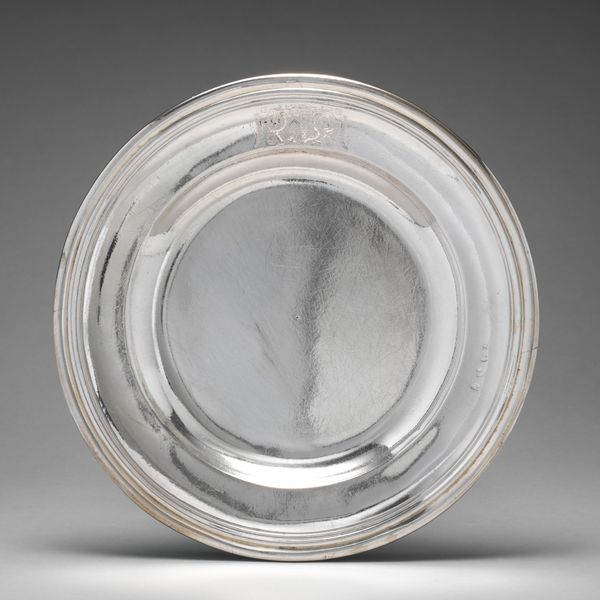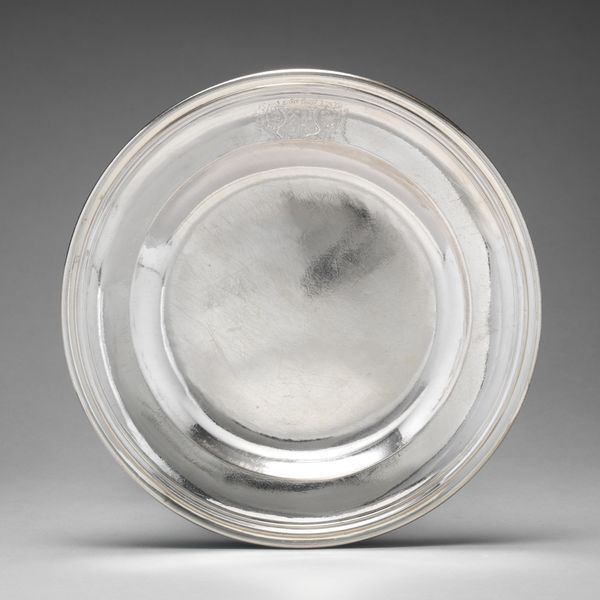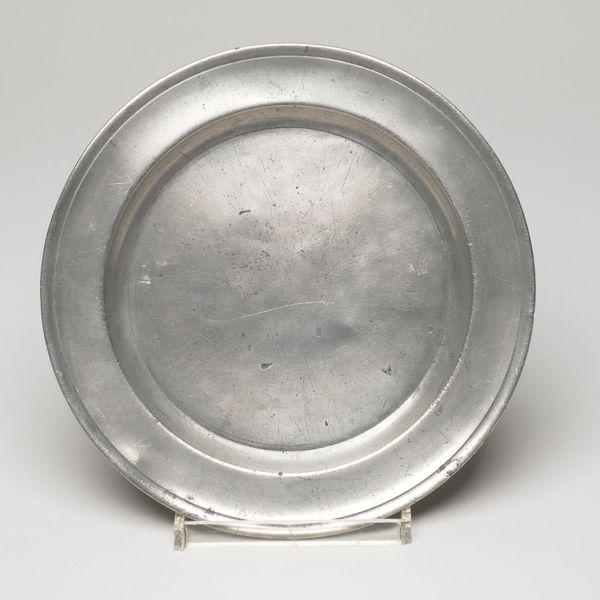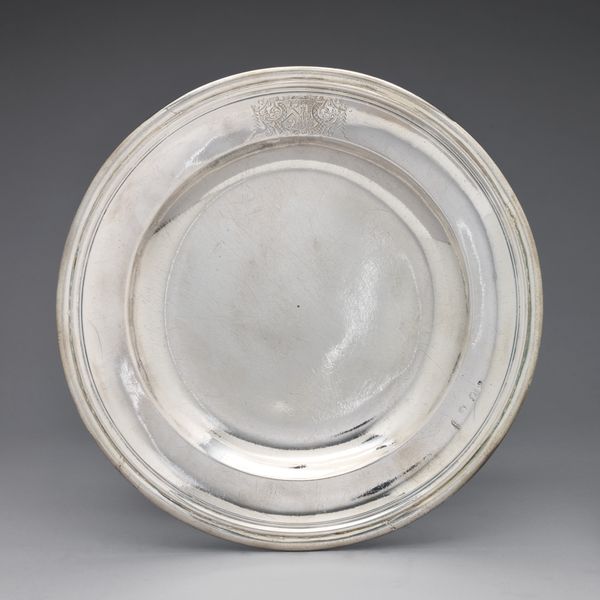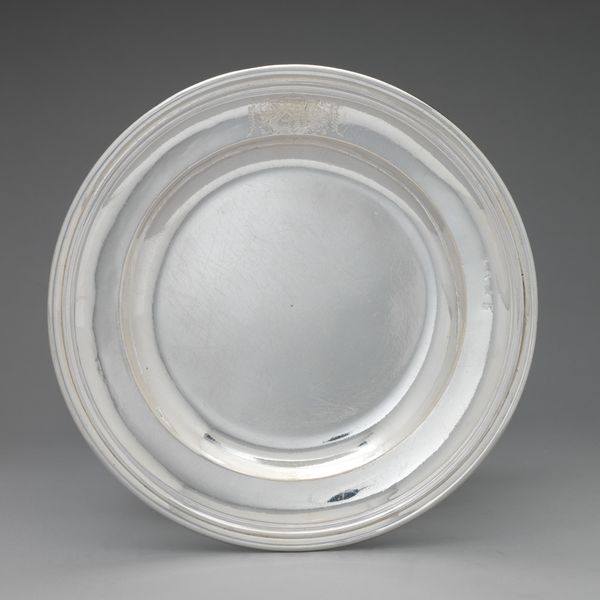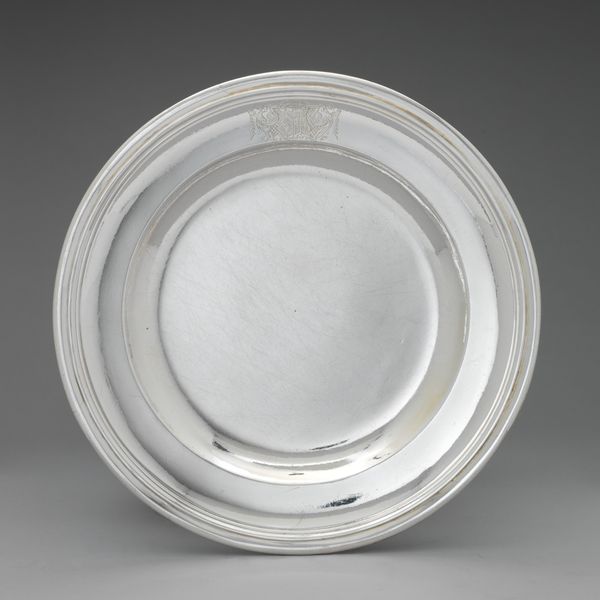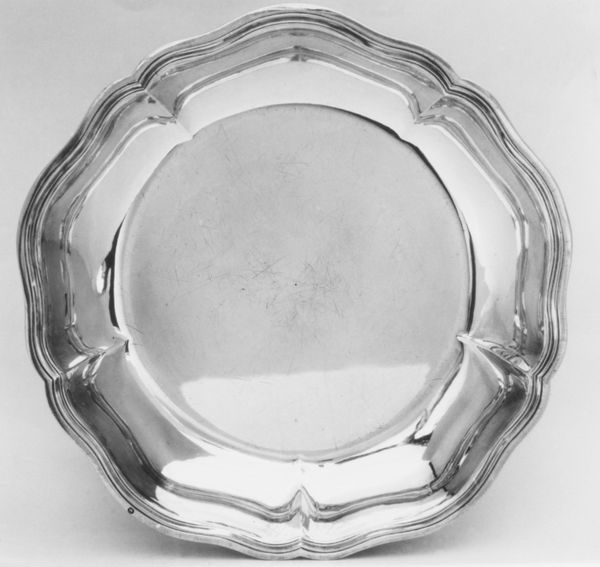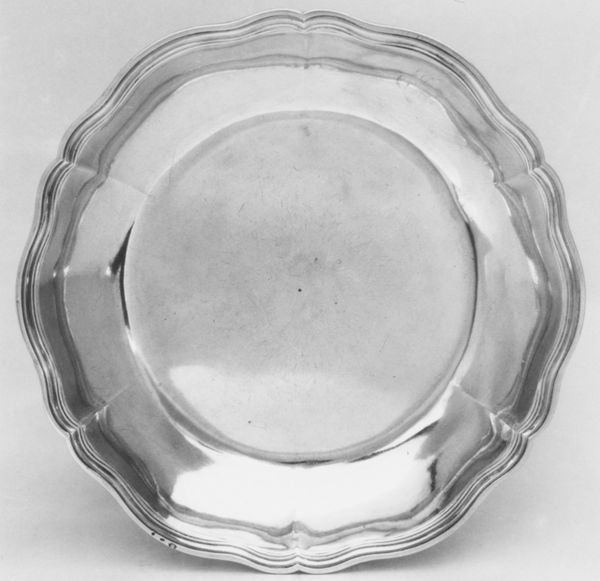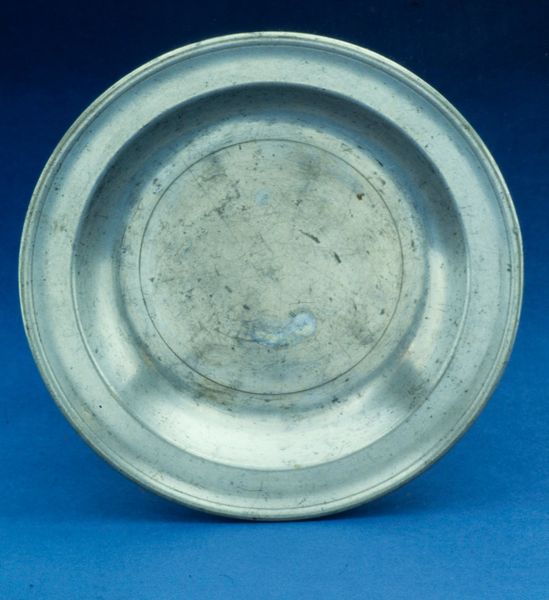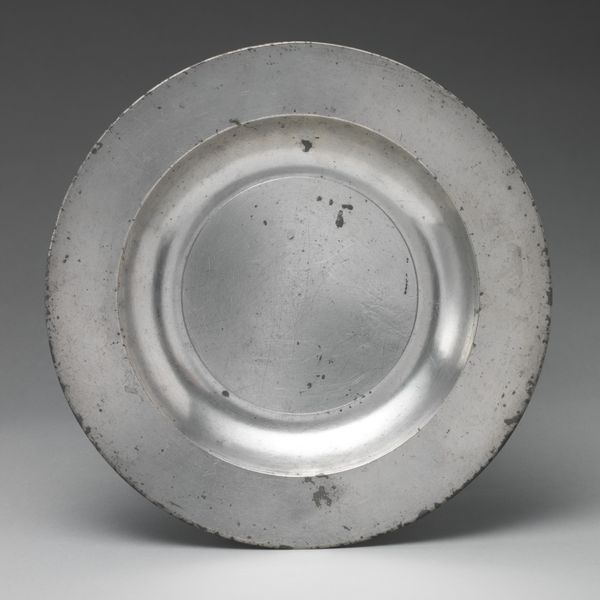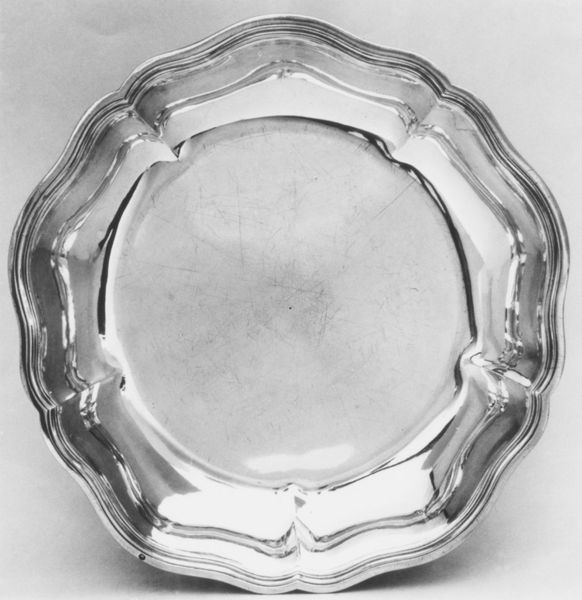
silver, metal, metalwork-silver, sculpture
#
silver
#
baroque
#
metal
#
metalwork-silver
#
sculpture
#
decorative-art
Dimensions: Overall (confirmed): 13/16 x 9 11/16 in., 18 oz. 9 dwt (2.1 x 24.6 cm, 574g)
Copyright: Public Domain
Editor: So, here we have one plate from a set of twelve, made of silver by Thomas Farren between 1715 and 1716. It’s interesting because it makes me think about how something seemingly ordinary like a plate can be considered a work of art. What's your take on this piece? Curator: The interesting thing about this silver plate is exactly its seeming ordinariness. We’re looking at the underbelly, where traces of its making and ownership are evident. What labour was involved in crafting each of these twelve plates? What was the social context for the use of silver as opposed to, say, pewter? Editor: That's a good point. I hadn't considered the social implications of the material itself. Is there something about Baroque silver that gives us clues about how it was made? Curator: Absolutely. The Baroque style often involved complex techniques and elaborate decoration, suggesting specialized labour. Were these plates made using casting, hammering, engraving, or a combination of methods? And beyond the crafting, who commissioned these? Who used them, and what was their experience consuming from them? Thinking about the complete set, how did these objects play into displays of wealth and power at the time? Editor: So, by looking at the plate in terms of its materiality and social context, we can really unlock stories about labor and consumption in the Baroque period. I’ll never look at silverware the same way again. Curator: Exactly! By considering the plate's creation, material composition, and usage, it tells us a great deal about economic and social dynamics of the 18th century.
Comments
No comments
Be the first to comment and join the conversation on the ultimate creative platform.
